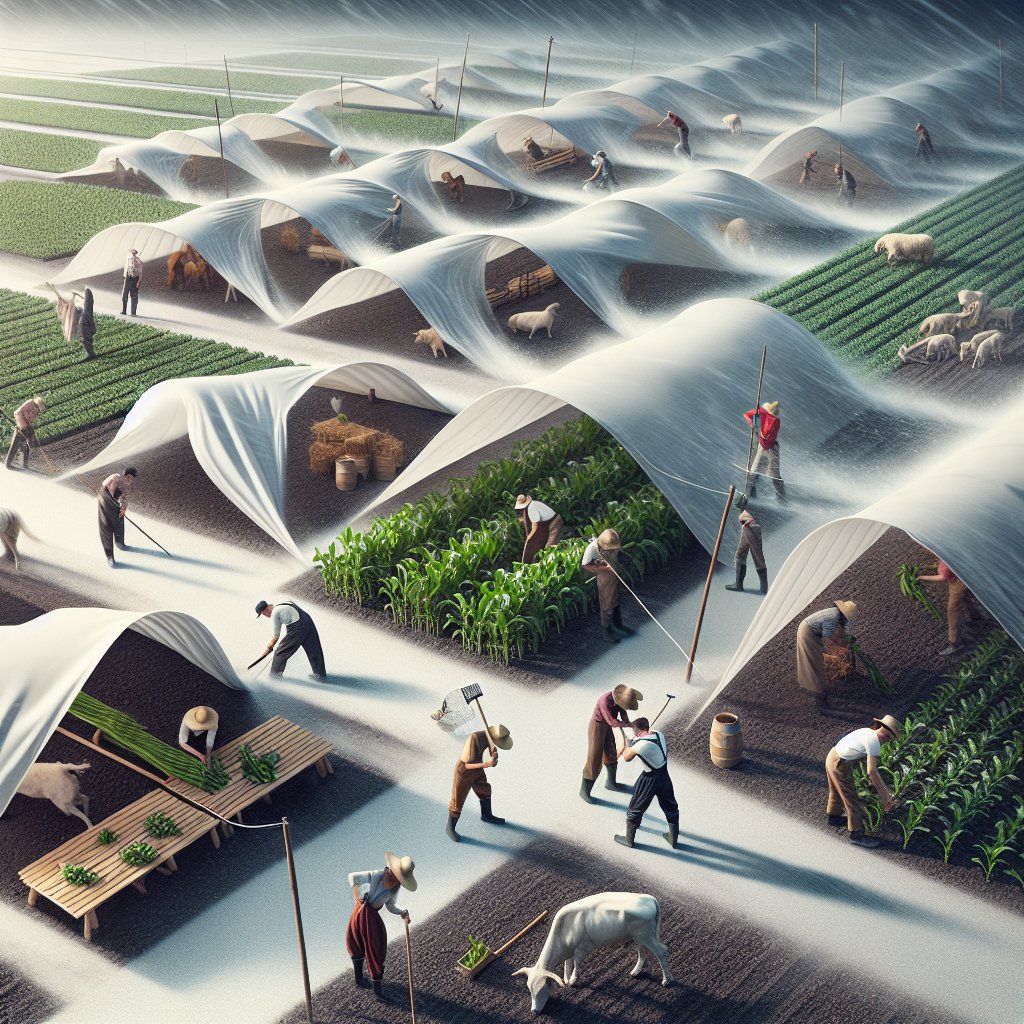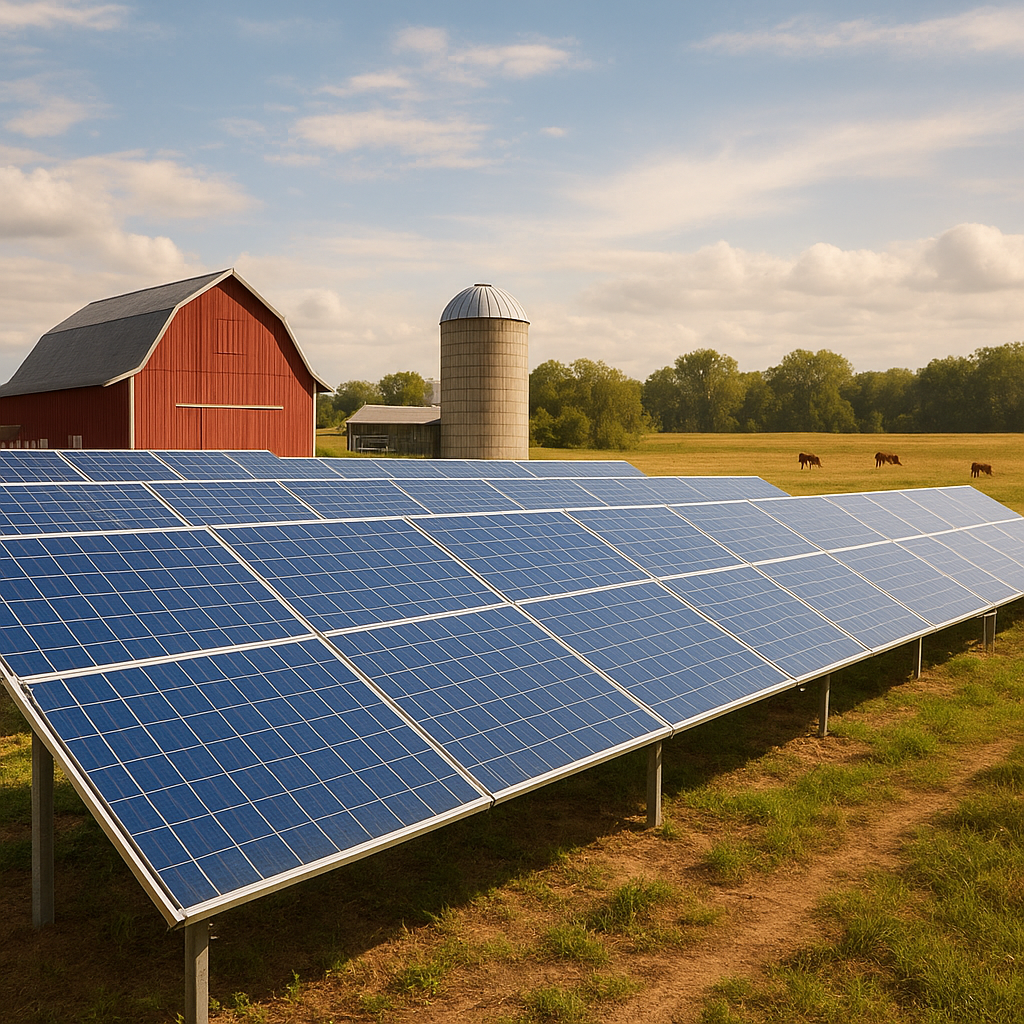Farmers around the world are increasingly facing the challenges posed by extreme weather conditions, which have become more frequent and severe due to climate change. These conditions, including droughts, floods, and unpredictable temperature fluctuations, threaten crop yields and livestock health. To ensure food security and sustain their livelihoods, farmers are adopting innovative strategies and technologies to adapt to these changing circumstances. This article explores the various methods farmers are employing to cope with extreme weather and the implications for the future of agriculture.
Understanding Extreme Weather Conditions
Extreme weather conditions encompass a range of phenomena that can significantly impact agricultural productivity. These include:
- Drought: Prolonged periods of low rainfall can lead to water scarcity, affecting crop growth and livestock health.
- Flooding: Excessive rainfall can inundate fields, leading to soil erosion, crop damage, and loss of arable land.
- Heatwaves: Elevated temperatures can stress plants and animals, reducing yields and increasing mortality rates.
- Frost and Freezing Temperatures: Unexpected cold snaps can damage crops that are not frost-resistant, leading to significant losses.
These extreme weather events not only disrupt farming operations but also have broader implications for food supply chains, local economies, and global markets. Understanding the nature and frequency of these events is crucial for farmers as they develop strategies to mitigate their impacts.
Adaptive Strategies for Farmers
Farmers are employing a variety of adaptive strategies to cope with the challenges posed by extreme weather conditions. These strategies can be categorized into several key areas:
1. Crop Diversification
One of the most effective ways farmers are adapting to extreme weather is through crop diversification. By planting a variety of crops, farmers can reduce the risk of total crop failure due to adverse weather conditions. For example:
- Resilient Varieties: Farmers are increasingly choosing crop varieties that are more resilient to drought, flooding, and temperature extremes. These varieties are often developed through traditional breeding methods or biotechnology.
- Intercropping: Growing multiple crops in the same field can enhance biodiversity and improve soil health, making the ecosystem more resilient to extreme weather.
2. Water Management Techniques
Effective water management is crucial for farmers facing drought and flooding. Various techniques are being implemented to optimize water use:
- Irrigation Systems: Advanced irrigation systems, such as drip irrigation and sprinkler systems, allow farmers to use water more efficiently, ensuring crops receive adequate moisture even during dry spells.
- Rainwater Harvesting: Collecting and storing rainwater can provide an additional water source during periods of drought, reducing reliance on groundwater.
- Soil Moisture Monitoring: Technologies that monitor soil moisture levels help farmers make informed decisions about when to irrigate, minimizing water waste.
3. Soil Health Improvement
Healthy soil is essential for resilient farming systems. Farmers are adopting practices that enhance soil health, which can improve crop resilience to extreme weather:
- Cover Cropping: Planting cover crops during the off-season helps prevent soil erosion, improve soil structure, and enhance nutrient availability.
- Conservation Tillage: Reducing tillage minimizes soil disturbance, helping to retain moisture and improve soil organic matter.
- Organic Amendments: Adding compost or other organic materials can improve soil fertility and water retention, making crops more resilient to drought.
4. Technological Innovations
Advancements in technology are playing a significant role in helping farmers adapt to extreme weather conditions. Some of the key innovations include:
- Precision Agriculture: Utilizing GPS and data analytics, farmers can optimize inputs such as water, fertilizers, and pesticides, leading to more efficient resource use and reduced environmental impact.
- Climate-Smart Agriculture: This approach integrates climate change adaptation and mitigation strategies, focusing on sustainable practices that enhance productivity while reducing greenhouse gas emissions.
- Weather Forecasting Tools: Access to accurate weather forecasts allows farmers to make timely decisions regarding planting, irrigation, and harvesting, minimizing the risks associated with extreme weather.
5. Community and Policy Support
Farmers are not alone in their efforts to adapt to extreme weather. Community support and government policies play a crucial role in facilitating adaptation:
- Cooperative Initiatives: Farmers are forming cooperatives to share resources, knowledge, and technology, enhancing their collective resilience to extreme weather.
- Government Programs: Many governments are implementing programs that provide financial assistance, training, and resources to help farmers adopt sustainable practices and technologies.
- Research and Development: Investment in agricultural research is essential for developing new crop varieties and farming practices that can withstand extreme weather conditions.
The Future of Farming in a Changing Climate
The future of farming in the face of extreme weather conditions will depend on the ability of farmers to adapt and innovate. As climate change continues to impact weather patterns, the agricultural sector must evolve to ensure food security and sustainability. Key considerations for the future include:
1. Continued Research and Innovation
Ongoing research into climate-resilient crops, sustainable farming practices, and innovative technologies will be essential for helping farmers adapt to changing conditions. Collaboration between scientists, farmers, and policymakers will drive the development of solutions that address the unique challenges posed by extreme weather.
2. Education and Training
Providing farmers with access to education and training on adaptive practices is crucial. Extension services and agricultural organizations can play a vital role in disseminating knowledge and resources, empowering farmers to make informed decisions.
3. Policy Frameworks
Governments must create supportive policy frameworks that encourage sustainable farming practices and provide financial incentives for adaptation. This includes investing in infrastructure, research, and disaster relief programs that help farmers recover from extreme weather events.
4. Global Cooperation
Climate change is a global challenge that requires international cooperation. Sharing knowledge, resources, and best practices across borders can enhance the resilience of farming systems worldwide. Collaborative efforts can lead to the development of global strategies that address the impacts of extreme weather on agriculture.
Conclusion
Farmers are at the forefront of the battle against extreme weather conditions, employing a range of adaptive strategies to ensure their livelihoods and the food security of communities around the world. By diversifying crops, improving water management, enhancing soil health, leveraging technology, and fostering community support, farmers are demonstrating resilience in the face of adversity. As climate change continues to pose challenges, the agricultural sector must remain proactive, embracing innovation and collaboration to build a sustainable future for farming.




